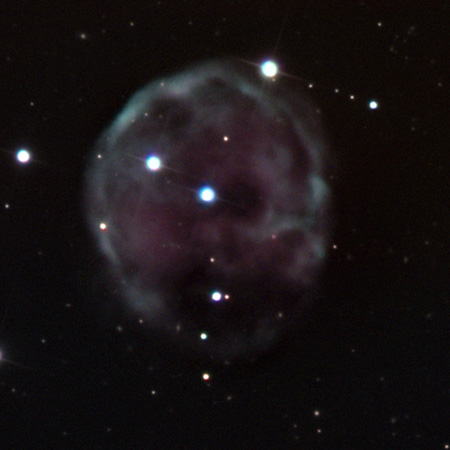It’s time to get out the Milky Way and Mars candy bars, the Moon Pies and the Starburst chews. It’s Halloween! The moon — just past first quarter — will greet your trick or treaters this year. A first quarter moon rises at noon and is high overhead at sunset. It sets around midnight. It’s the perfect Halloween moon, no trick for the astronomers to show and a real treat for their visitors to see.
Halloween falls on the 8th day of the lunar month in October 2014, and the rugged Appenine mountains, and the oval walled plain Plato are both visible. With binoculars or telescopes, find the
Straight Wall, a lunar fault line best visible on this night. Tycho and Copernicus are on the terminator the next day, and so is Clavius, the large walled plain south of Tycho. My astronomy group, the Old Town Sidewalk Astronomers shows the moon every first quarter moon Saturday night on our town square. Check your own local astronomers, museum, planetarium or college science department. I bet they do too!
Here are my favorite spooky named objects. Some are tricks and all are treats! The galaxies and nebulae will require a dark sky, but the lunar features and double stars are city observing targets. Have fun observing and let me know your favorites and I’ll add them to the list next year!
Mirach’s Ghost NGC 404 in Andromeda, magnitude 11,
size 4.3′ x 3.9′ This galaxy is hard to see. Move Mirach (Beta Andromedae) out of the way for a ghostly view.
The Phantom Streak NGC 6741 in Aquila, magnitude
10.8, size 6″. A fast evolving planetary nebula.
The Ghost of the Moon Nebula NGC 6781 in Aquila,
magnitude 11.8, size 1.8′. A nice round ghostly planetary nebula.
The Spider Galaxy NGC 5829 (Arp 42) in Bootes, magnitude
13.8, 1.7′ x 1.5′. Pretty face-on spiral galaxy in BOOtes. Scary!
The Skull Nebula NGC 246 in Cetus, magnitude 8,
size 3.8′. William Herschel discovered this large planetary nebula. It’s easy to find, and a real treat! I looked at this planetary nebula through my telescope just last Saturday night, October 25th, 2014! It’s one of my favorites.
The Witch Head Nebula. IC 2118 in Eridanis, magnitude 13, size 160′ by 80′. (About the same size as the Andromeda Galaxy which is 189′ by 61′). This very large and very faint reflection nebula is associated with the star Rigel but is almost 3 degrees west of the star. The blue color of the nebula is caused not only by blue color of Rigel, but also because the dust grains reflect blue light more efficiently than red. Earth’s daytime sky appears blue for the same reason.
The Ghost Ring Nebula IC 5148 in Grus, magnitude 13, size 2′. A pretty little planetary nebula in the neck of Grus the crane. If you can see Fomalhaut in Piscis Austrinus, look a little more south to find Grus. I tracked this one down and captured it in my eyepiece 2 weekends ago October 18, from my favorite dark sky site, Amboy Crater, in California’s Mojave Desert.
The Little Ghost Nebula NGC 6369 in Ophiuchus, magnitude
12.9, size 30″. A pretty planetary nebula, also discovered by William Herschel. Look for the mag 15.9 central star in this planetary nebula.
The Red Spider Nebula NGC 6537 in Sagittarius, magnitude
12.5, size 9″. A bipolar planetary nebula with a hot white dwarf star.
Phobos and Deimos (Fear and Terror) – the moons of Mars. It’s possible to see these small moons as you can see from my sketch, but easier to see when Mars is closer to Earth than it is now. Mars opposition in 2016 will be the best time to try! There’s nothing to fear!
Any lunar map will help you find your way to all of these lunar features, and they are all visible this year on Halloween. Here is my favorite lunar website Hitchhikers Guide to the Moon. You can get the general location of each Rukl lunar chart listed in the text below, then find the chart on the Rukl Map (most lunar observers favorite book of charts). This map shows where to find all the Lunar landing sites . Drop me a note if you would like a hard copy of this map, I have a whole box of them on my desk at work.
Hell, Rukl’s Atlas of the Moon, chart 64. 33 km crater near Deslandres, which is an amazing and very large and complex crater. The small crater Hell (actually named for 18th century Hungarian astronomer Maximilian Hell – who observed the 1769 Transit of Venus) is also near (north of) Tycho, one of the most prominent craters on the moon. Its’ bright rays will be easily visible a week after Halloween 2014 during the full moon phase. You’ll need a telescope to see Hell.
Lacus Doloris (Lake of Suffering), Rukl chart 23, 110 km mare. This Mare is just over the Montes Haemus from Mare Serenitatis (Sea of Serenity). If you’ve spotted the bright white (tiny) crater Linne, you’re close to the Lake of Suffering. This small lake is visible visible South of the bright crater Linne.
Lacus Mortis (Lake of Death), Rukl chart 14, 150 km diameter flooded crater. You’ll find it North of the great crater Posidonius, and North of easy-to-spot Mare Crisium, well placed for Halloween viewing this year. Through your telescope, find some great rilles (long, narrow depressions in the lunar surface that resemble channels) on the Western side of Lacus Mortis.
Lacus Timoris (Lake of Fear) and Palus Epidemiarum (Marsh of Epidemics), Rulk chart 63. In the Southwestern section of the moon. This section of the moon deserves a careful look through the telescopes. You’ll also find lunar domes and rilles in this region of the moon. Rima Hesiodus bisects the Eastern part of the Marsh of Epidemics. Lacus Timoris is an elongated region surrounded by mountains. Best seen near full moon, 6 days after Halloween 2014.
Palus Putrendis (Marsh of Rot), Rukl chart 22, 180 km small plain on the
prime meridian, near Hadley Rille and the Apollo 15 site. How can you not like the name Palus Putrendis? It’s easy to find between the crater Archimedes and Montes Apenninus. Well worth a look! Here’s a nice Lunar Map showing all the Apollo landing sites and more.
Boo Epsilon (36) (Bootes), double star, mag 2.5
and 4.9, yellow/orange and blue/green double
Boo Mu (51) Bootes, triple star, mag 4.3 and 7 and
7.6 triple, yellow primary, yellow/orange pair
Boo Xi (37) Bootes, quadruple star, mag 4.7
and 7.0, with a 9.6 and 12.6 companion, yellow and reddish/orange
Happy Halloween from PK 164+31.1 (Jones 1)




This is a great list! I sent the link to the members of the Saint Louis Astronomical Society (SLAS) here in Missouri and got a number of enthusiastic responses.
On a side note, back in the early ’90s, we had a member by the name of Houston Jones. Are you related? If so, how?
Thanks much – Grant Martin
Nope – no relation. There is also a bluegrass band called Houston Jones, and I do know most of the musicians in it. Glad you like the list! I had a lot of fun putting it together – they are mostluy challenging objects, all of which I’ve seen in my 12.5 and 17.5 inch reflectors.
Thank you Jane! So sad…. I’m up in Visalia and won’t be there to join all you guys tonight under such wonderful conditions. What’s worse is that I didn’t bring my Meade with me. But I’ll be with all of you in spririt!!!
Nice list..will check those out this week if cloudage goes away.